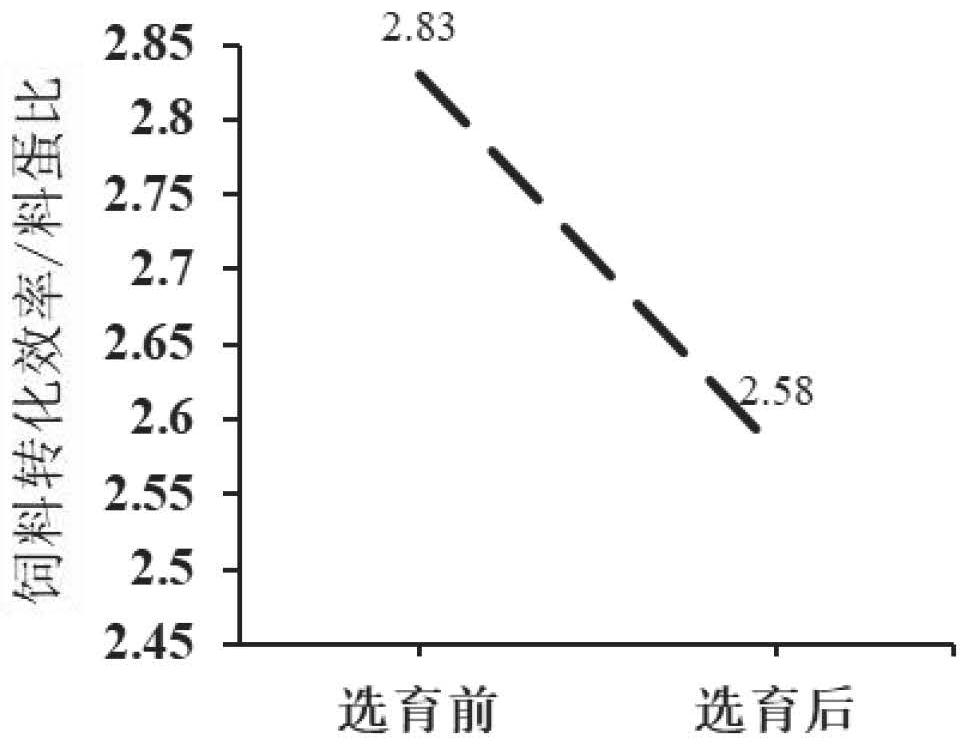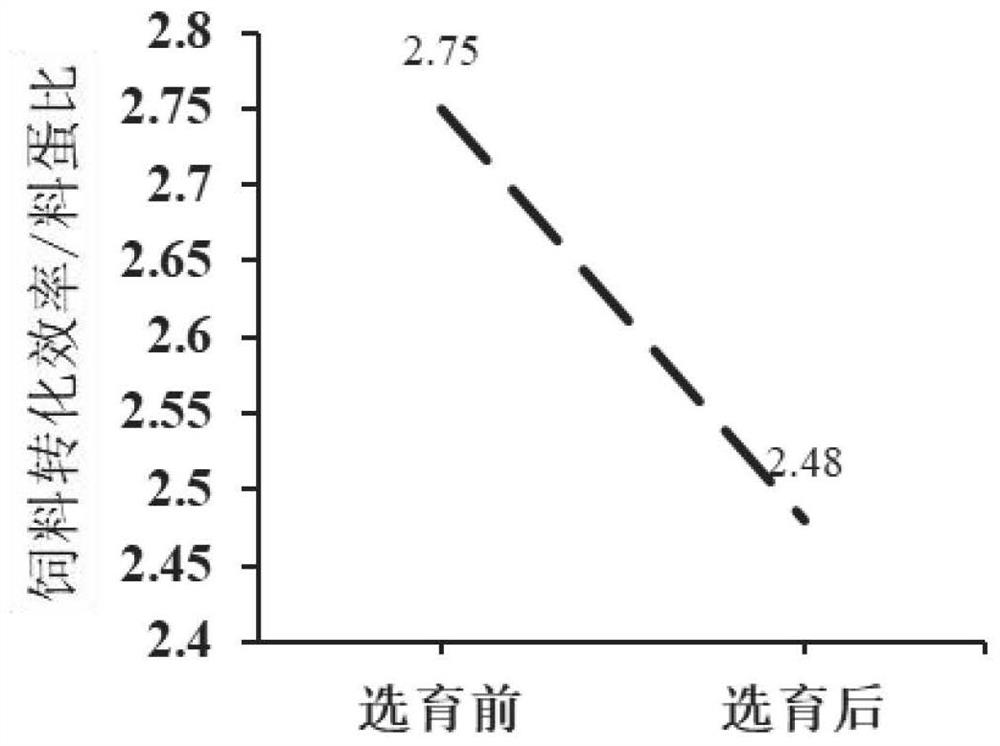Grain-saving laying duck specialized strain breeding method
A grain-saving, laying duck technology, applied in food processing, data processing applications, instruments, etc., can solve the problems of slow progress and poor effect of genetic inheritance from generation to generation, and achieve the effect of improving feed utilization efficiency
- Summary
- Abstract
- Description
- Claims
- Application Information
AI Technical Summary
Problems solved by technology
Method used
Image
Examples
Embodiment 1
[0017] Example 1 Breeding of Specialized Lines of Shaoxing Ducks of Grain-saving Type
[0018] A breeding population of about 1400 Shaoxing ducks (Zhejiang Guowei Technology Co., Ltd.) was selected. Beginning at week 38, individual cage troughs were separated by designed baffles. From 38 to 42 weeks, the individual feed intake (FI), egg production (EML), body weight (BW) and weight gain (ΔW) of the breeding herd were recorded. The average FI, EML, BW and ΔW of Shaoxing duck were 180.4g / d, 64.7g / d, 1458.2g and 5.2g, respectively, and the feed-to-egg ratio was 2.83:1, as shown in Table 1 below:
[0019] Table 1 Determination of performance phenotype data of Shaoxing duck
[0020]
[0021] Before the 43rd week, the individual RFI, feed-to-egg ratio and other indicators were calculated according to the technical model of remaining feed intake. Sort the value of the remaining feed intake, and select the individuals with the smaller value of the remaining feed intake according...
Embodiment 2
[0023] Example 2 Breeding of Specialized Lines of Jinyun Hemp Ducks of Grain-saving Type
[0024] A breeding population of about 1600 Jinyun hemp ducks (Hubei Shendan Health Food Co., Ltd.) was selected. Beginning at week 38, individual cages were separated by designed baffles. From 38 to 42 weeks, the individual feed intake (FI), egg production (EML), body weight (BW) and weight gain (ΔW) of the breeding herd were recorded. The average FI, EML, BW and ΔW of Jinyun hemp duck are 165.2g / d, 60.1g / d, 1350.1g and 1.5g respectively, and the feed-to-egg ratio is 2.75:1, as shown in Table 2 below:
[0025] Table 2 Determination of production performance phenotype data of Jinyun hemp duck
[0026]
[0027] Before the 43rd week, the remaining feed intake, feed-to-egg ratio and other indicators were calculated according to the technical model of remaining feed intake. Sort the RFI values, and select the individuals with the smallest remaining feed intake according to the number th...
PUM
 Login to View More
Login to View More Abstract
Description
Claims
Application Information
 Login to View More
Login to View More - Generate Ideas
- Intellectual Property
- Life Sciences
- Materials
- Tech Scout
- Unparalleled Data Quality
- Higher Quality Content
- 60% Fewer Hallucinations
Browse by: Latest US Patents, China's latest patents, Technical Efficacy Thesaurus, Application Domain, Technology Topic, Popular Technical Reports.
© 2025 PatSnap. All rights reserved.Legal|Privacy policy|Modern Slavery Act Transparency Statement|Sitemap|About US| Contact US: help@patsnap.com



